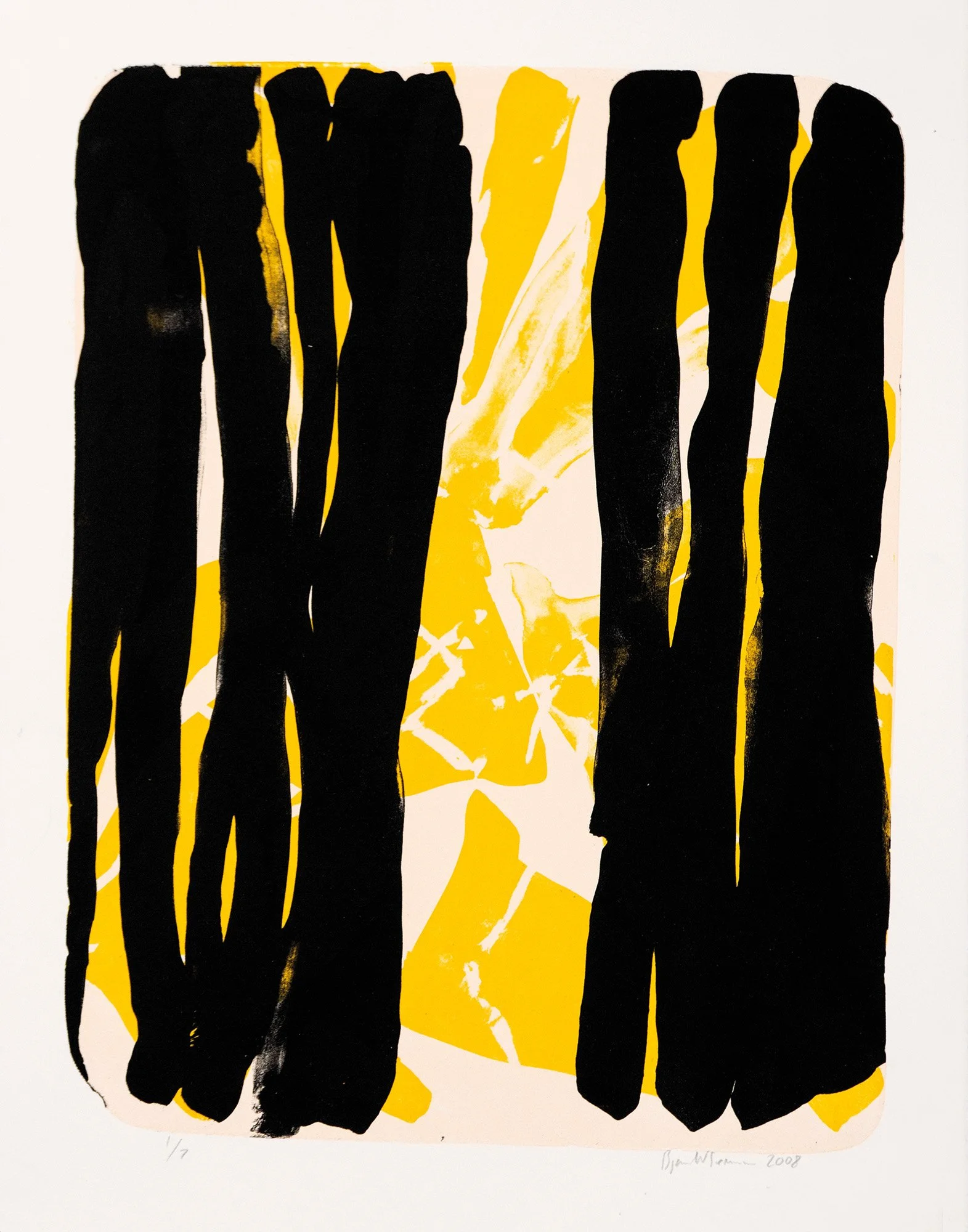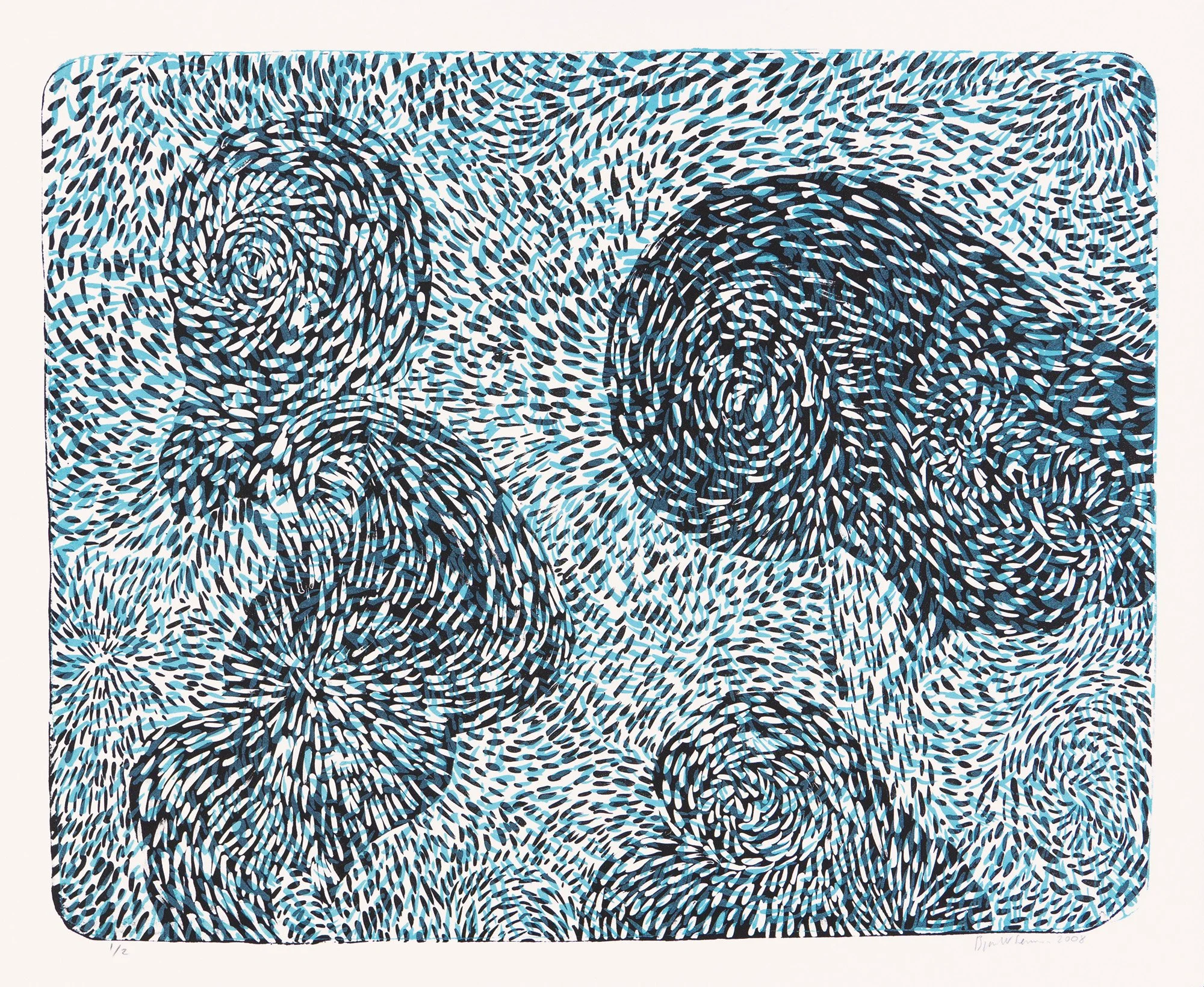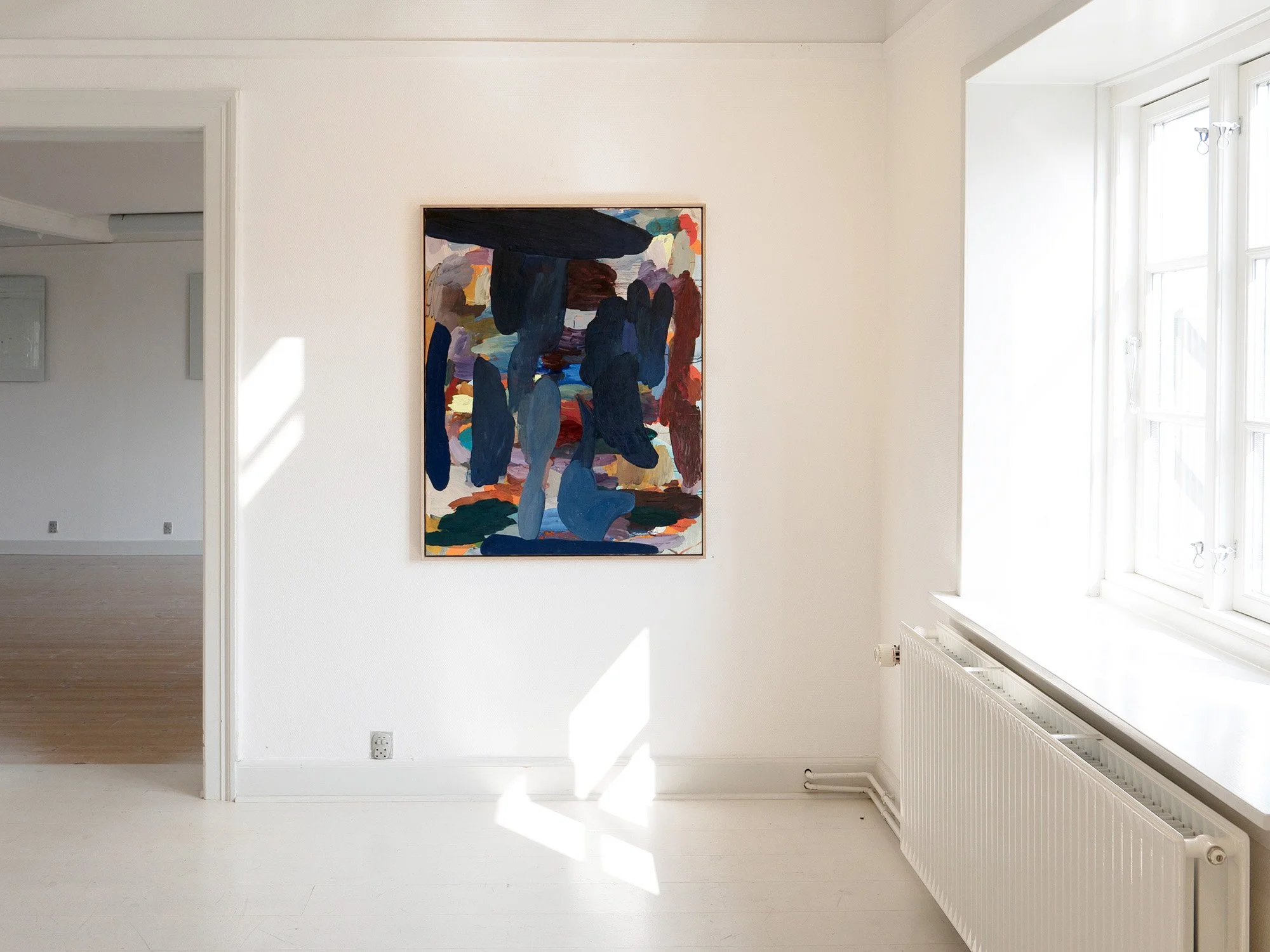From One Springs the Other
by Helene Johanne Christensen
Organic shapes meet, cover each other partly, collide, connect and tell something new, something else, something more than blue, turquoise, orange. It is movement, movement in networks of organic patterns. It is from the arrangement of lines and the relation between colours, shapes, surfaces and layers, from the tension between foreground and background, vertical and horizontal, boundaries and infinity, that the moods and meanings arise in the works.
Intruding Transition, oil on canvas, 100 x 80 cm
The organic expression is present in both the paintings and the graphic works. It may have to do with a lifelong observation and reproduction of the lines, patterns and colours of natural landscapes and of the shapes of the human body. The repertoire of organic shapes characterizing the works have probably been embedded through the hand’s repeated appropriation of the lines, curves, windings, harmonies and dissonance of the human body and nature. They have become a collection of primary shapes that repeats, combines and varies, so that brand new shapes and expressions emerge. From one springs the other. These are repetitions and variations as we see them in nature and as we hear in music, which is another important source of inspiration. The method resembles that of the musician: the improvisation, the sampling, the combination of different elements, the composition of lines, colours, shapes and the creation of contrast, polyphony, harmony and dissonance.
"Cloud Structure", "Parallel Roots". Pigment print on heavy cotton paper.
The digital prints, grows from the paintings and the graphic works. Here the analogue and the digital meet. The motifs of the paintings and the graphic work are processed digitally and the process is conscious and more determined, there is room for controlled experiments, new constructions. The artificiality of the digital oppose the organic, but the movement, the continuous change is present here as well. Motifs, shapes and colours are twisted and turned kaleidoscopically so that new images appear. The material already exists and the process is in this way archaeological: Motifs, lines and patterns are being uncovered, unearthed, dissected and reconstructed digitally as new expressions, new narratives. From one springs the other.
The lithography is methodical and technical. The materials affect the process which is divided into phases. There is room for surprise: The work does not present itself until the ink is transferred from the stone or the printing plate to the paper. When two prints are combined, a third partly unpredictable image appears.
"Arriving From a Distance", oil on canvas, 65 x 80 cm
There are slow images; images where the movements seem sluggish, as in liquid, organs softly bumping against each other inside the body, or rounded stones rolling in the surf, calming down between each wave. There are fast images, where elliptic shapes bear resemblance with the dividing and multiplying of cells inside the body, threadlike microorganisms in a common vibrant dance. Even though they are abstract works their close connection with nature is clear.
"In Circles", oil on canvas, 90 x 75 cm
The painting process is continuous, uninterrupted and organic; brush by brush the image grows from the hands, it takes shape as it happens. Both processes are led by a combination of intuition and experience, a bodily knowledge. One colour or shape call on the next, improvising and listening. The working processes are different, but the tracks cannot be separated, they interfere with one another. The layering technique of the graphic work sneaks into the paintings; the organic shapes from the handwork on the paintings are transferred to the lithographs. Motifs and patterns from the analogue works form the material of the digital prints.
Pathways. Oil on canvas, 80 x 100 cm
There is a sense of time in the works, that is connected with nature and the human body and contributes to the feeling of movement and change. In the paintings the brushstrokes stand by being brushstrokes and the body of the painter is present even after the paint is dry and the work finished. The physicality, the presence of the body, creates a feeling of time, movement and change, similar to the movement and ongoing change in nature.
The boundaries of the surface play an important role in the works since they determine the space in which the work can take place. But the boundaries, paradoxically enough, also create a sense of infinity because each work connects with other works across the picture frames. In this way each work becomes part of a bigger whole and sings along on the chorus of nature: Everything is connected, moving and changing, never alone, never still.
Text by Helene Johanne Christensen












